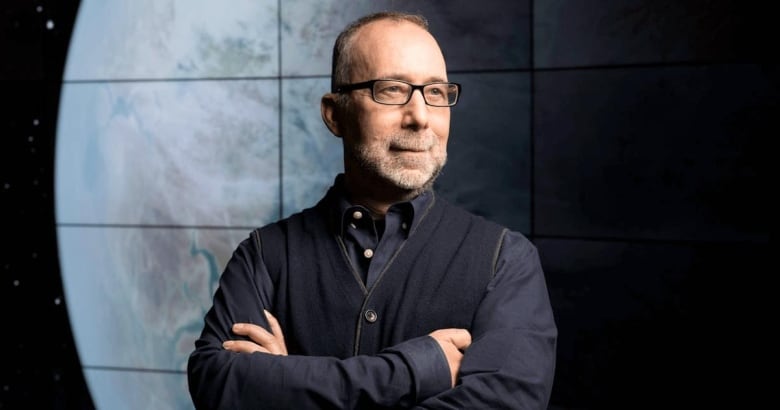Hollywood shows us the multiverse as if it's real. Scientists would rather see proof
If the multiverse exists, it probably looks nothing like a Marvel film, astrophysicists say

Ever wondered if there's another you, somewhere out there in the universe? How about an infinite number of people like you, whose lives are almost exactly like yours — or what your life could have been, if you'd just done that one thing differently?
Welcome to the multiverse, often imagined as a collection of parallel universes filled with replicas of us.
Scientists have been debating the idea of the multiverse for nearly 70 years, long before Hollywood began connecting universes through magic portals.
The concept is central to some of this year's most-hyped films, including sci-fi adventure Everything Everywhere All at Once, and the new Marvel superhero flick, Doctor Strange in the Multiverse of Madness.
Far-fetched as those big screen depictions may be, the question of whether the multiverse exists — and if so, in what form — continues to polarize scientists.

Possible, or science fiction?
As Doctor Strange himself says in the upcoming film: "The multiverse is a concept about which we know frighteningly little."
While some scientists believe it's possible on some level, others say the idea is pure science fiction.
"Here's the thing about the multiverse: it makes a great story … but at this point, there is zero evidence," said Adam Frank, a professor of astrophysics at the University of Rochester in New York.

Frank, despite his skepticism, has helped shape that story on the silver screen. He was the scientific consultant for the 2016 Doctor Strange film in which the Marvel Cinematic Universe first explored the concept of the multiverse, beyond the pages of its comics.
In that role, Frank gave guidance on how physics and philosophy could gel with the film's mind-bending magic. The key, he says, is not scientific accuracy — it's that Marvel's multiverse has its own set of rules that it sticks to.
"I don't mind if my science fiction plays with ideas that are kind of fringey or even wrong. Their job is to tell me a good story," Frank told CBC News.
WATCH | Doctor Strange (2016) explores the multiverse:
Scientists, on the other hand, need proof — which, he says, they don't currently have for the existence of the multiverse.
"It is so far away from any part of science that is experimentally validated."
The many theories of the multiverse
The idea of the multiverse is rooted not only in physics and astronomy, but also in philosophy, with ancient Greek philosophers contemplating the idea of infinite worlds.
Modern pop culture's fantasy of the multiverse stems from the "many-worlds" theory of American physicist Hugh Everett who, in the 1950s, proposed that every action causes the universe to split into many different versions of itself — one for each possible outcome of the action.

"What would have happened if that car crash didn't occur, or if some other thing did happen?" explains professor Katie Mack, a theoretical astrophysicist at North Carolina State University. She describes Everett's theory as "very appealing" to us as humans.
"The idea that just because some bad luck befell us in our past, it doesn't mean that every version of us in every possible universe had that happen … It's not clear how much physics does support any of those ideas, but it's still an exciting thing to think about."
Of the many proposed forms the multiverse might take, Everett's "many-worlds" is among the more fanciful.
Another theory suggests that when the Big Bang occurred roughly 13.8 billion years ago, it could have created other universes, or "bubbles", which could collide with our own.

Matthew Johnson, an assistant professor of physics at York University and associate faculty member at the Perimeter Institute for Theoretical Physics, has considered this theory at length.
About a decade ago, he and a group of colleagues went searching for scientific proof, but came up empty-handed.
"You could actually go out and look in the sky for evidence that we live in one of these bubbles, and that it collided with another one. And we went out and we looked for that, and we didn't find it," Johnson said.
"The sad part is we probably are not going to gather new experimental evidence that will do much better than we already have."
The late astrophysicist Stephen Hawking took a different approach in his final research paper in 2018, in which he and co-author Thomas Hertog proposed a new mathematical framework that theorized a finite, rather than endless, number of other universes.
Hawking had previously said he had "never been a fan of the multiverse" because of the impossibility of testing theories about it. He never had the opportunity to further test his own theory, dying days after submitting the paper, although Hertog said he planned to continue their research.
A universe so big it must contain duplicates
Another theory has broader, albeit far from universal, support among scientists: the idea that the universe is so enormous and there are only so many possible configurations, so at some point, there must be duplicates.
"The universe would have to be really, really, really, really big for that to happen — and that is contemplated in some pretty out-there theories," Johnson said.
The idea was explored, to the delight of Spider-Man fans, when three Peter Parkers — played by Tobey Maguire, Andrew Garfield and Tom Holland — crossed paths in last year's Spider-Man: No Way Home.
Unfortunately for real-life earthlings, arranging a meeting with multiverse versions of ourselves is (currently, at least) scientifically impossible.
"We don't know how to create a traversable wormhole — that is, one that you could enter, and then go somewhere and exit it," Johnson said.
He adds that it would be extraordinarily dangerous for life to imitate art in attempting to traverse the multiverse.
"Usually what happens is wormholes collapse into a singularity, and then game over."
